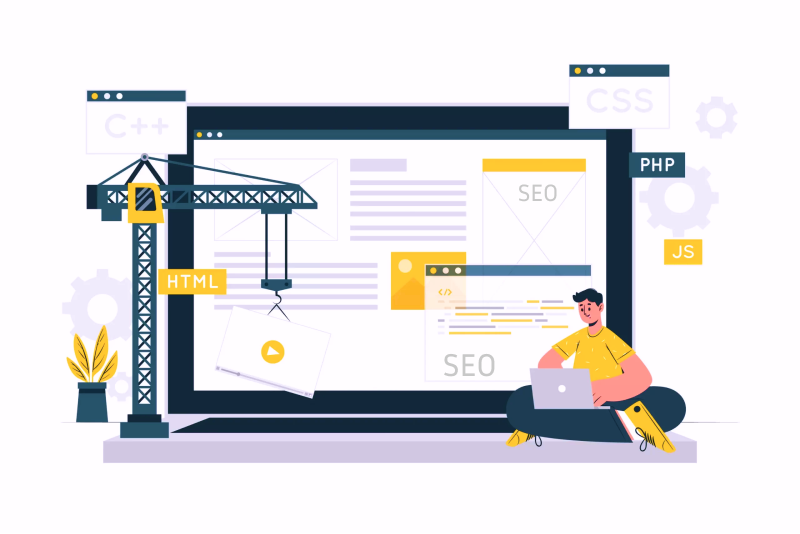
How Minimalist Design Can Enhance Your Website’s SEO Performance
Minimalist design has become a cornerstone of modern web aesthetics, celebrated for its clean lines, uncluttered layouts, and focus on user experience. Beyond its visual appeal, this approach offers significant advantages for your website’s SEO performance. By streamlining elements and focusing on simplicity, minimalist design can directly influence factors like site speed, mobile responsiveness, and user engagement—all of which are critical for search engine rankings.
What Is Minimalist Design?
Minimalist design focuses on stripping away unnecessary elements to highlight what truly matters—both visually and functionally. In web design, this approach prioritizes clean layouts, intuitive navigation, and efficient use of space. The result is a website that feels seamless and uncluttered, providing a distraction-free experience for visitors.
But minimalist design isn’t just about aesthetics. Reducing visual complexity leads to faster, more responsive websites—qualities that directly contribute to improved SEO performance—for instance, having fewer elements on a page results in lighter page sizes and quicker load times. Even a one-second delay in page loading can significantly impact user retention and search rankings.
Google’s ranking factors, such as fast load times and mobile-friendly layouts, naturally align with the principles of minimalist design. By focusing on simplicity and usability, minimalist design can help your site rank higher while keeping visitors engaged and satisfied.
How Minimalist Design Supports SEO Performance
Minimalist design goes beyond aesthetics, offering measurable benefits for SEO. By focusing on streamlined functionality, it addresses several key factors that search engines prioritize when ranking websites:
Improved Page Speed
By removing unnecessary elements, minimalist designs result in lighter pages and faster load times. Search engines like Google reward fast-loading websites because they provide a better user experience. Faster load times also reduce bounce rates, helping keep visitors engaged.
Enhanced Mobile Responsiveness
Minimalist designs adapt effortlessly to mobile devices, ensuring smooth navigation and readability. With Google’s mobile-first indexing, having a mobile-friendly website is no longer optional—it’s essential for better rankings.
Better User Engagement
Websites with minimalist designs are easier to navigate, allowing users to find what they need quickly. When visitors spend more time engaging with your content, search engines take it as a signal that your site is relevant and valuable.
Simplified Crawlability
Clear, well-organized structures are a hallmark of minimalist websites. These structures make it easier for search engine bots to crawl and index your pages, improving content discoverability and increasing your chances of ranking higher in search results.
By aligning user experience with search engine requirements, minimalist design helps your website achieve both aesthetic and functional success.
Common Mistakes to Avoid When Combining Minimalism and SEO
While minimalist design offers significant SEO advantages, there are potential pitfalls to avoid:
- Over-Simplification: Removing too many elements can strip away critical content or keywords that help search engines understand your site.
- Ignoring Metadata: Meta titles, descriptions, and alt text for images are essential for SEO but are sometimes overlooked in minimalist designs.
- Excessive Reliance on Imagery: Using large, uncompressed images can slow down your site while failing to include alt text can hinder search engine understanding.
- Poor Internal Linking: Minimalist designs may omit visible navigation or internal links, which can disrupt user flow and reduce search engine crawlability.
Addressing these issues can allow you to enjoy the benefits of minimalist design without compromising your website’s SEO performance.
When to Seek Professional Help for SEO Optimization
While minimalist design can significantly improve SEO, some challenges require expertise to overcome. For example, if your site’s load speed remains slow despite a simplified design or if you struggle to implement mobile responsiveness effectively, professional SEO services can make a substantial difference.
SEO experts can also ensure that technical elements, such as structured data and crawlability, are optimized without disrupting your site’s aesthetic simplicity. To explore additional techniques that enhance rankings, check out these never-failing SEO techniques designed to boost website performance.
For businesses looking to take their optimization efforts further, the decision to hire SEO services can be transformative. From diagnosing technical issues to implementing advanced strategies, professionals ensure your site stays competitive in search rankings while maintaining its sleek, user-friendly design.
By bringing in experts when needed, you can maximize the impact of minimalist design while ensuring your site continues to meet the demands of search engines and users alike.
Conclusion
Minimalist design offers a unique opportunity to create websites that are visually stunning, user-friendly, and SEO-optimized. By focusing on simplicity, you can improve page speed, enhance mobile responsiveness, and deliver a seamless user experience. However, it’s essential to strike the right balance, ensuring that critical SEO elements like metadata and internal linking aren’t overlooked.
Adopting minimalist principles and seeking professional assistance when necessary can help your website achieve both aesthetic and functional excellence. When executed thoughtfully, minimalism becomes a powerful tool for driving engagement, improving search rankings, and achieving digital success.
Interlinking suggestion:
From: https://redalkemi.com/blog/why-minimalist-design-is-the-only-way-forward/ to this article with anchor connecting minimalism with SEO success